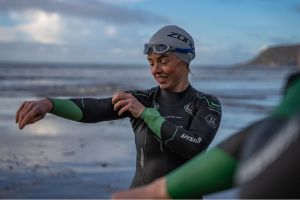A lot of professional athletes and serious age groupers will travel to altitude for their altitude training camp to prepare for their main events. Maybe you heard about altitude or hypoxic training already: training on altitude has some advantages and disadvantages but one thing is always present: thin air or the lack of oxygen. Most athletes try to find a spot of at least 1700m above sea level because of the amount of oxygen in the air is significantly lower compared to the amount at sea level.
Why altitude training?
A simple example to indicate what this means for your body: running 10k in 50 minutes on a treadmill at sea level will cost you less energy than running the same distance and speed on the treadmill at altitude because your body needs to work harder to get the same amount of oxygen in, simply because there is less oxygen available.
During your stay at altitude, your body adapts to the new ‘standard’ with less oxygen and therefore will enable you to enjoy some benefits. The main idea of altitude training is that you will make your body stronger so that you can perform better as soon as you will get back on sea level: spending less energy because there it is easier to get oxygen again. If you’re careful and you train right. Because altitude training comes with a lot of guidelines. Even for an experienced athlete (I have been on altitude training camps more than 10 times already) you have to listen to your body very well: every time on altitude is different due to the level of fitness, the location, weather circumstances etc.
Well-known altitude training spots in Europe with good facilities for triathletes are considered to be Font Romeu (France), Livigno (Italy), Sierra Nevada (Spain) and St. Moritz (Switzerland). Each location has its advantages and disadvantages but they all have a pool, cycling roads and a trails.
Tips and tricks
In case you think: I want to experience training on altitude! Read the following tips and tricks so that you’re prepared a bit better. Always discuss altitude training with your coach and make sure you’re well-equipped before you go on altitude.
- Duration: most effect will be gained if you stay at least three weeks. After 7-11 days your body will adapt itself to the new circumstances and then the real benefit will be reached.
- Take it easy: you cannot train too slow on altitude. Especially during the first week, you will experience that you need to catch your breath. Ignoring this will lead to less or even a negative training effect. Let the altitude do the work for you during the first days up.
- Listen to your body: this is a bit of general advice but it is extra important on altitude. Your body will tell when it’s ready for more and/or hard work. Make sure you build in recovery days and build up slowly.
- Recovery is key: take some extra recovery time compared to your sessions back home, your body does not only need to work harder during the tempo pace but also recovery in between takes longer. E.g. If you run 5 x 4 minutes with 1 minute recovery, consider 5x 4 minutes with 2 minutes recovery.
- Hydrate: especially on altitude, you need to drink more than average to stay hydrated.
- Think about iron: because your body needs to work harder on altitude, you can consider taking iron supplements to avoid a drop in blood values resulting in for example anaemia.
Last but not least: enjoy your time at altitude! Training camps are great to focus on because you’ll get less distraction compared to home, you can enjoy a different scenery and you can work on your fitness for your next main event. Good luck and have fun!
Check out Joep’s athlete profile here.






















